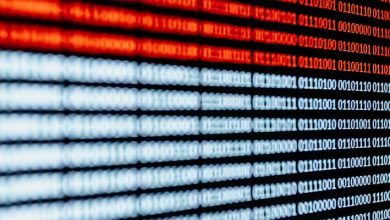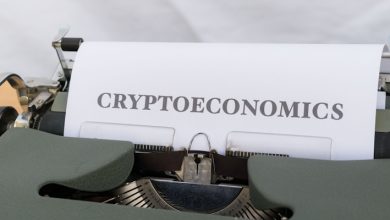Review of the Top NFT Marketplaces: Features and Fees Compared

- Introduction to NFT Marketplaces
- Exploring the World of Non-Fungible Tokens
- Comparing Features of Leading NFT Marketplaces
- Understanding the Fees Associated with NFT Transactions
- A Closer Look at Top NFT Marketplaces
- Tips for Choosing the Right NFT Marketplace
Introduction to NFT Marketplaces
The emergence of Non-Fungible Tokens (NFTs) has revolutionized the way digital assets are bought and sold. NFTs are unique digital tokens that represent ownership of a specific item or piece of content, such as art, music, or collectibles. NFT marketplaces serve as platforms where NFTs can be minted, bought, and traded among users.
These marketplaces provide a decentralized and secure environment for creators and collectors to interact and exchange NFTs. Each NFT marketplace has its own unique features and fee structures, making it essential for users to compare different platforms before deciding where to list their NFTs. Some of the top NFT marketplaces include OpenSea, Rarible, and Foundation.
OpenSea is one of the largest NFT marketplaces, offering a wide range of digital assets for sale. It allows users to create and sell their own NFTs without any fees, making it a popular choice for artists and creators. Rarible, on the other hand, is known for its community-driven approach, where users can participate in governance decisions and earn RARI tokens by engaging with the platform.
Foundation is a curated NFT marketplace that focuses on high-quality digital art. It has a selective application process for artists, ensuring that only the best work is featured on the platform. Each of these marketplaces has its own strengths and weaknesses, so users should carefully consider their needs and goals when choosing where to list their NFTs.
Exploring the World of Non-Fungible Tokens
When it comes to exploring the world of non-fungible tokens (NFTs), there are a plethora of marketplaces available for both creators and collectors to engage with. These platforms provide a space for unique digital assets to be bought, sold, and traded using blockchain technology. NFTs have gained popularity in recent years, offering a new way for artists, musicians, and other creators to monetize their work in a digital format.
One of the key features of NFT marketplaces is the ability to verify the authenticity and ownership of a digital asset through the use of blockchain technology. This ensures that each NFT is one-of-a-kind and cannot be replicated or forged. Additionally, NFTs can be easily transferred between users, allowing for seamless transactions on the marketplace.
NFT marketplaces also offer a variety of features to enhance the buying and selling experience. These may include search filters, categories, and trending sections to help users discover new and popular NFTs. Some platforms even offer tools for creators to tokenize their work, create limited editions, and set royalties for future sales.
While each NFT marketplace may have its own unique features and fees, they all serve as a gateway for creators and collectors to participate in the growing world of digital assets. Whether you are looking to buy, sell, or simply explore the world of NFTs, there is a marketplace out there that can cater to your needs.
Comparing Features of Leading NFT Marketplaces
When comparing the features of the leading NFT marketplaces, it’s essential to consider various factors that can impact your buying and selling experience. Each marketplace has its unique set of characteristics that cater to different needs and preferences. Understanding these distinctions can help you make an informed decision on where to list your NFTs or where to purchase them.
One of the key aspects to consider is the user interface and ease of navigation on the platform. Some marketplaces have a more intuitive design, making it simple for users to browse through listings, place bids, or upload their digital assets. Others may have a more complex layout that requires a learning curve to navigate effectively. It’s crucial to choose a marketplace that aligns with your comfort level and technical skills.
Another important feature to compare is the fees charged by each marketplace. While most platforms levy a commission on each sale, the percentage can vary significantly. Some marketplaces may also have additional fees for listing NFTs, promoting them, or transferring ownership. Understanding the fee structure is crucial to maximizing your profits and avoiding any unexpected costs.
Additionally, the level of security and trustworthiness of a marketplace should be a top consideration. Look for platforms that offer robust security measures to protect your digital assets and personal information. It’s also essential to research the reputation of the marketplace within the NFT community to ensure that it has a history of fair dealings and timely payments.
Furthermore, consider the level of customer support provided by each marketplace. In case you encounter any issues or have questions about the buying or selling process, having access to responsive customer service can make a significant difference. Look for platforms that offer multiple channels of communication, such as live chat, email support, or a dedicated help center.
By carefully comparing the features of the leading NFT marketplaces, you can choose a platform that meets your specific needs and preferences. Whether you prioritize user-friendliness, fee transparency, security, or customer support, conducting thorough research can help you find the right marketplace to engage with the vibrant world of NFTs.
Understanding the Fees Associated with NFT Transactions
One important aspect to consider when engaging in NFT transactions is understanding the fees associated with them. These fees can vary depending on the marketplace you use, the type of transaction you are conducting, and the current network congestion. It is crucial to be aware of these fees to avoid any surprises or unexpected costs.
When buying or selling NFTs, you may encounter different types of fees, such as gas fees, minting fees, listing fees, and transaction fees. Gas fees are charges for the computational work required to process and validate transactions on the blockchain. Minting fees are the costs associated with creating a new NFT, while listing fees are charges for putting an NFT up for sale on a marketplace. Transaction fees are fees paid to the platform for facilitating the transfer of ownership of an NFT.
Before engaging in any NFT transactions, it is essential to research and compare the fees charged by different marketplaces. Some platforms may have lower fees but higher transaction costs, while others may have higher listing fees but lower transaction fees. By understanding the fee structure of each marketplace, you can make informed decisions and choose the platform that best suits your needs and budget.
In addition to understanding the fees associated with NFT transactions, it is also important to consider the overall user experience offered by each marketplace. Factors such as user interface, customer support, and security measures should also be taken into account when selecting a platform to buy or sell NFTs.
In conclusion, being aware of the fees associated with NFT transactions is crucial for anyone looking to enter the world of digital collectibles. By doing your research, comparing different marketplaces, and considering other factors beyond fees, you can make informed decisions and have a positive experience in the exciting world of NFTs.
A Closer Look at Top NFT Marketplaces
When taking a closer look at the top NFT marketplaces, it becomes evident that each platform offers its own unique features and fee structures. One of the most popular NFT marketplaces is OpenSea, known for its user-friendly interface and wide range of digital collectibles. Another prominent player in the NFT space is Rarible, which stands out for its decentralized approach and community-driven ethos. Additionally, platforms like Foundation and SuperRare cater to a more exclusive audience, focusing on high-end digital art and limited edition pieces.
In terms of fees, NFT marketplaces typically charge a percentage of the final sale price as a commission. OpenSea, for example, charges a 2.5% commission on all sales, while Rarible imposes a 5% fee. Foundation and SuperRare, on the other hand, have higher commission rates ranging from 10% to 15%. It is essential for creators and collectors to consider these fees when choosing a platform to buy or sell NFTs.
Overall, the top NFT marketplaces offer a variety of features and fee structures to cater to different needs within the digital art and collectibles space. Whether you are an artist looking to showcase your work or a collector searching for unique pieces, there is a marketplace out there that aligns with your preferences and goals. By exploring the options available and understanding the fee structures, you can make informed decisions about where to engage in the exciting world of NFTs.
Tips for Choosing the Right NFT Marketplace
When looking for the right NFT marketplace to sell your digital assets, there are several factors to consider to ensure you make the best choice. One important tip is to research the marketplace’s reputation and history to ensure it is a trustworthy platform. Look for reviews and feedback from other users to gauge their experiences with the platform.
Another tip is to consider the fees associated with each marketplace. Different platforms have varying fee structures, including listing fees, transaction fees, and withdrawal fees. It is essential to understand these costs to determine which marketplace offers the most cost-effective solution for your needs.
Additionally, consider the user interface and user experience of each marketplace. A user-friendly platform with intuitive navigation can make it easier for you to list and sell your NFTs. Look for features such as search functionality, categorization options, and customization tools to enhance your selling experience.
Furthermore, take into account the audience and reach of each marketplace. Some platforms may have a more extensive user base and higher visibility, which can help increase the exposure of your digital assets. Consider the target audience of each marketplace and choose one that aligns with your goals and target market.
In conclusion, choosing the right NFT marketplace requires careful consideration of factors such as reputation, fees, user experience, and audience reach. By taking the time to research and compare different platforms, you can find the best marketplace to showcase and sell your digital collectibles.




